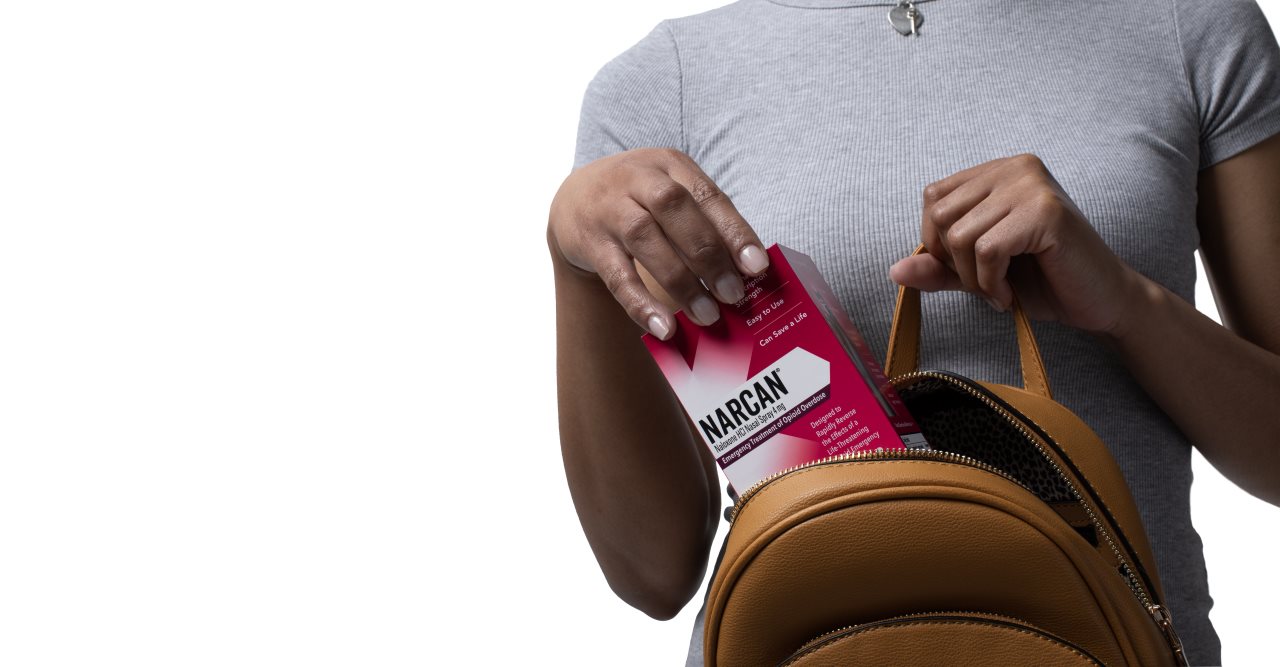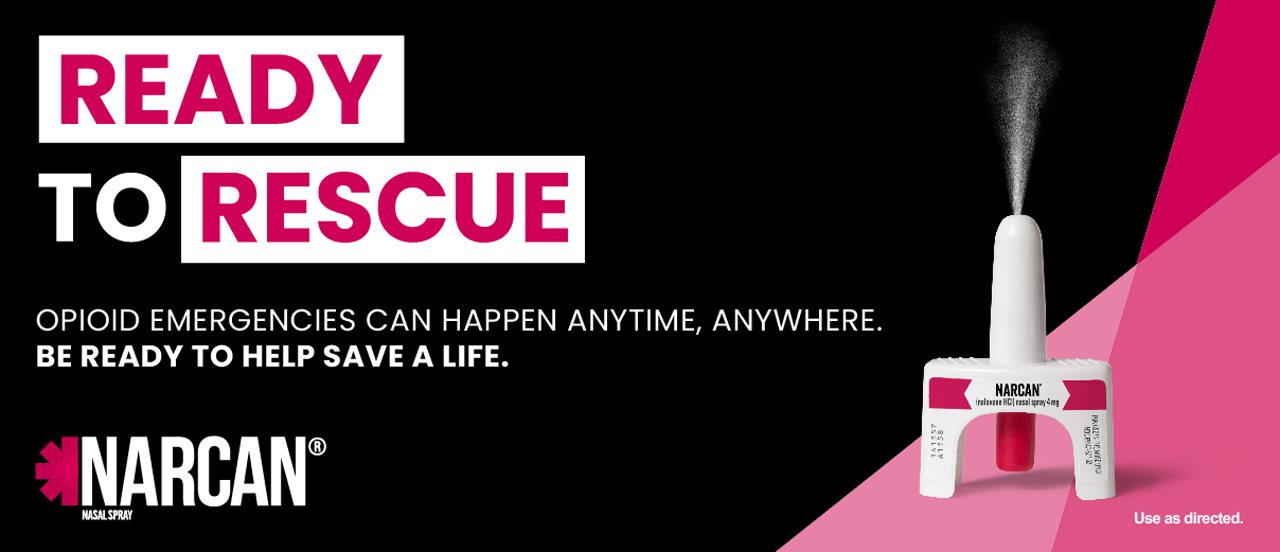Back-to-school shopping? Here's one item to add to your cart
(BPT) - Do you have a teenager or young adult heading back to school this year? Are you looking for peace of mind that they will stay safe? While picking up school supplies, clothing, sports gear or even dorm furniture, consider updating your first-aid kit this back-to-school season — particularly in light of the increasing prevalence of fentanyl poisonings.1
Did you know opioid overdose is the leading cause of accidental death in the U.S.?2 Just last year, over 100,000 lives were lost to opioid overdose deaths, most of which were driven by fentanyl.3,4
Younger generations are particularly at risk for opioid emergencies, as rates of opioid misuse and dependence are highest for young adults ages 18-25.5 And in 2022 alone, 22 high school-aged teens died each week from an accidental overdose.6 An accidental overdose can happen to anyone, anywhere, at any time,7 so everyone should be prepared to act in order to save a life.
The thought of someone around you experiencing this type of emergency can be daunting, but preparedness can help minimize some of the fear associated with accidental opioid overdoses.8 Being equipped with the knowledge and tools is important if you're faced with an opioid emergency.
1. Know the signs
Accidental opioid overdoses, including fentanyl poisonings, are serious emergencies where every second counts. Being educated on the signs is critical so that you can respond quickly while waiting for emergency personnel.
Signs of an opioid emergency include:9
- Breathing becomes slow or irregular, or stops
- Lips and fingernails turn blue
- Pupils drastically shrink in size
- Heartbeat and blood pressure decline
- Skin goes cold
- Ability to respond or awareness disappears
2. Normalize naloxone preparedness
For parents, it can be challenging to talk about opioids and overdose, but having open and honest conversations is vital because opioid emergencies can happen to anyone, anywhere and at any time — most commonly in our own homes.7 In fact, according to a new survey conducted by Bryter Global on behalf of Emergent BioSolutions, nearly nine in 10 parents believe that normalizing the topic of opioid overdose and reversal treatments, such as naloxone nasal spray, could help save lives.10
Don’t know where to start? Create a safe and welcoming space at home so there is comfort to share concerns or questions about this and other topics. During these discussions, encourage questions and thoughts and make sure everyone is aware of how to be ready in case of an emergency using the many resources available.

Courtesy of Emergent
3. Carry NARCAN® Nasal Spray
Keep a naloxone spray, like NARCAN® Nasal Spray, at home or add it to a first-aid kit so it’s easily accessible in case of an emergency. NARCAN® Nasal Spray is a life-saving medication that can reverse the effects of an opioid overdose in minutes. No special training or assembly is required. The life-saving treatment is available over the counter at pharmacies, retailers and online.
4. Learn the ‘Lay, Spray, Stay’ method
An easy way to be prepared for an opioid emergency is remembering three key words: Lay, Spray, Stay.
If you suspect someone is experiencing an opioid overdose, lay them down on their back and tilt their head up. Check for slowed breathing or unresponsiveness. Next, take your NARCAN® Nasal Spray, insert the device into either nostril and spray. Following administration, call 911 and stay with the person until the emergency service team arrives. Administer more naloxone doses as needed.

By being proactive and prepared, we can all help save a life. Visit www.NARCAN.com to learn more and find a local retailer near you. For more information about the 'Lay, Spray, Stay' method, check out this video here:
Photo of Emmitt Smith courtesy Emergent BioSolutions
References:
1. Freibott CE, Vest N, Stein MD, Lipson SK. Opioid Overdose Knowledge Among Adolescents and Young Adults. JAMA Pediatr. 2024;178(6):618–620. doi:10.1001/jamapediatrics.2024.0561. Accessed July 29, 2024.
2. Schiller EY, Goyal A, Mechanic OJ. Opioid overdose. NCBI Bookshelf. A service of the National Library of Medicine, National Institutes of Health. Available at: https://www.ncbi.nlm.nih.gov/books/NBK470415/. Updated April 29, 2023. Accessed July 29, 2024.
3. Centers for Disease Control and Prevention. Statement from CDC Chief Medical Officer Dr. Deb Houry on 2023 Overdose Death Data. Available at: https://www.cdc.gov/media/releases/2024/s-overdose-data.html. July 29, 2024
4. Centers for Disease Control and Prevention. SUDORS Dashboard: Fatal Drug Overdose Data. February 26, 2024. Available at: https://www.cdc.gov/overdose-prevention/data-research/facts-stats/sudors-dashboard-fatal-overdose-data.html. Accessed July 29, 2024.
5. Rath JM, Perks SN, Vallone DM, et al. Educating Young Adults about Opioid Misuse: Evidence from a Mass Media Intervention. Int J Environ Res Public Health. 2022 Jan;19(1):22. Accessed July 29, 2024.
6. UCLA Health. About 22 high school age adolescents died each week from overdoses in 2022, driven by fentanyl-laced prescription pills. January 8, 2024. Available at: https://www.uclahealth.org/news/about-22-high-school-age-adolescents-died-each-week. Accessed July 29, 2024.
7. The World Health Organization. Community Management of Opioid Overdose. 2014. Available at: https://apps.who.int/iris/bitstream/handle/10665/137462/9789241548816_eng.pdf?sequence=1 Accessed July 29, 2024.
8. Walden University. Why Emergency Preparedness Matters. Available at: https://www.waldenu.edu/online-masters-programs/ms-in-criminal-justice/resource/why-emergency-preparedness-matters. Accessed July 29, 2024.
9. U.S. Department of Health and Human Services Centers for Disease Control and Prevention. Know the Signs to Save a Life. Available at: https://www.cdc.gov/drugoverdose/pdf/patients/Preventing-an-Opioid-Overdose-Tip-Card-a.pdf. Accessed July 29, 2024.
10. Bryter Inc. interviewed 1,005 American adults online between April 24 through April 28, 2024. The survey was designed to be representative of the American adult population a whole by age, gender, region and HHI (+/-3%). Aggregate data was tested for statistical significance at the 95% confidence level. Data on file.
Comments






